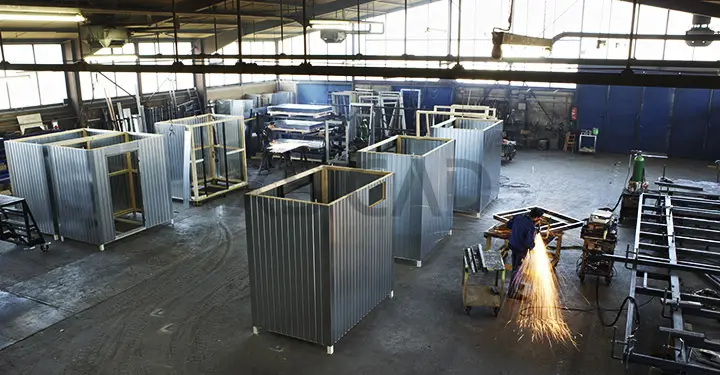Our Articles

BIM-led Prefabrication: An Effective Way Forward for Healthcare MEP Projects
Designing and planning for mechanical, electrical, and plumbing (MEP) systems for healthcare facilities brings with it a set of daunting challenges for the entire MEP (M&E) fraternity. Considering the project complexities, stringent building codes, healthcare standards, local regulations, and constricted deadlines, MEP (M&E) designers and contractors are always walking a tight line.
Whilst building information modelling (BIM) techniques at the design stage may improve interdisciplinary MEP coordination, help detect design clashes and streamline scheduling/costing in the preconstruction phase, very little is known about how BIM-led prefabrication of MEP systems offsite can help enhance quality, save time and money, and optimise the logistical flow on site. The BIM design data, embedded in the MEP models, can be used to create fabrication drawings by either using traditional detailing or using fabrication softwares (Autodesk Fabrication). These drawings display fabrication details which can be directly recognised by the CNC machines for production purposes.
One of the most challenging engineering systems to design, healthcare facilities house a range of medical and therapeutic departments to treat different illnesses. Each of these departments has its own set of requirements for HVAC, electrical, plumbing and fire protection systems as well as plant areas. So, whether the hospital’s MEP system demands HVAC systems with precise humidity control, temperature, and indoor air quality (IAQ) standards or custom isolation for operating rooms, the information rooted in the BIM 3D documents can enhance modularisation of mechanical, electrical and plumbing systems.
Some other MEP components which are specifically used in healthcare facilities include sprinklers, fire suppression systems, high-pressure steam boilers, direct-expansion (DX) cooling systems, and tamper-proof receptacles. As it is well known in the AEC industry worldwide, BIM is a change in approach which brings together all the discipline-specific professionals during the pre-construction phase. On the contrary, the traditional design-bid-build approach lacks coordination between the concerned disciplines.
Accordingly, when MEP (M&E) designers, consultants, and fabricators use BIM for prefabrication of MEP components, the benefits are worthy. Besides, the modularisation of mechanical, electrical and plumbing systems in a controlled environment and installing them on site is highly effective considering its cost savings, quality improvements, labour efficiency, waste reduction, and in-time completion benefits.
Considering the complex nature of MEP (M&E) systems in healthcare facilities and an increase in adoption of BIM, prefabrication and modularisation will offer more productivity and efficiency gains to MEP (M&E) designers, contractors, manufacturers, fabricators, and installers. Modern prefabrication technologies along with integrated project delivery (IPD) can certainly lead to greater predictability, timely project completion, and increased cost savings.
To know how MEP (M&E) designers, contractors, consultants, and fabricators can benefit from our MEP (M&E) drafting, modelling, and spatial coordination services, contact us.
XS CAD has valuable experience providing architectural design services and architectural design drafting services for commercial, mixed-use and healthcare industry. Our range of services for building design firms across the world include architectural BIM modelling and other architectural BIM services and we offer retained teams when required. We create these models, drawings and renderings by using Revit, AutoCAD, Illustrator and BIM 360 Design for cloud collaboration.

